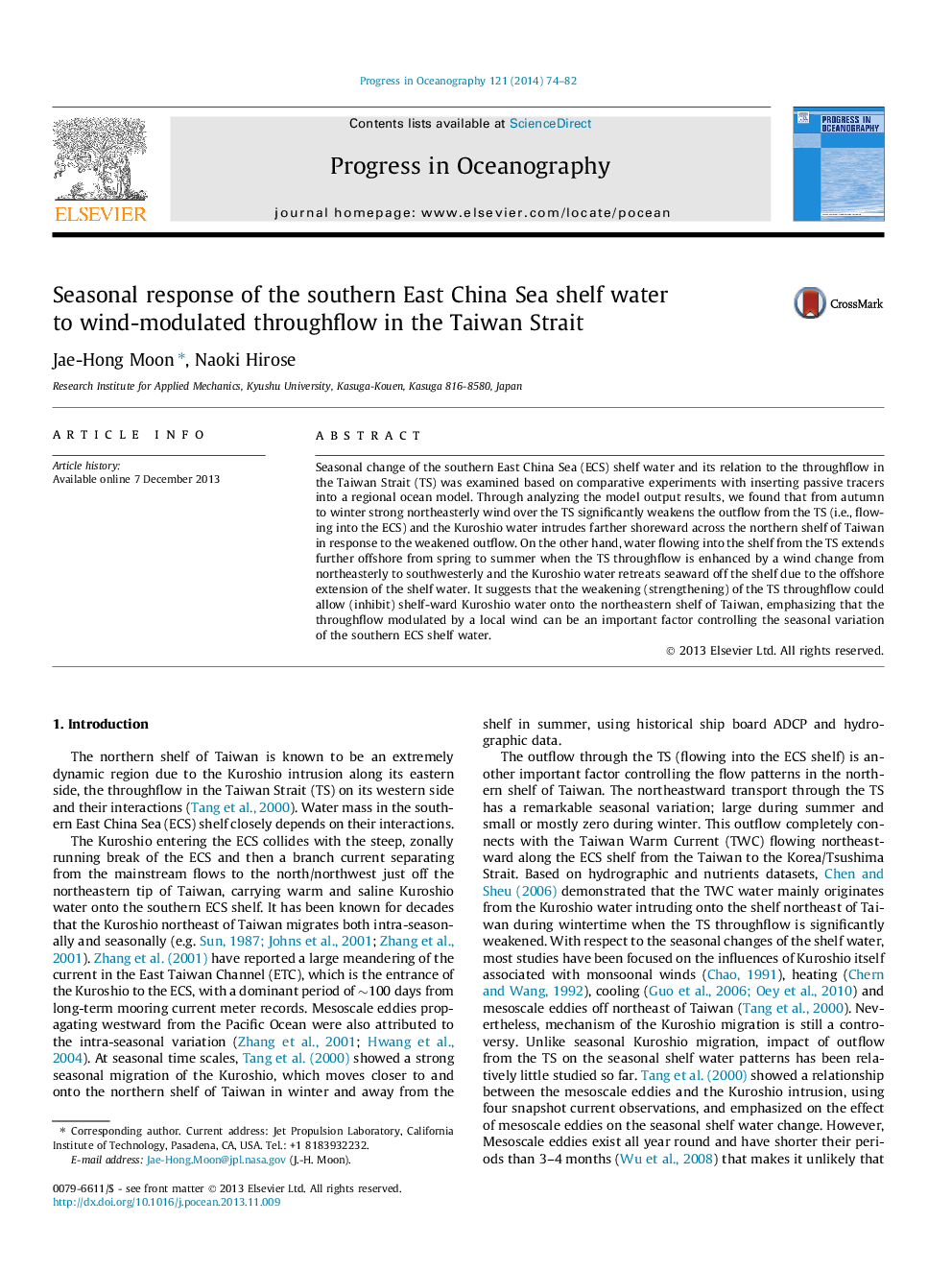| Article ID | Journal | Published Year | Pages | File Type |
|---|---|---|---|---|
| 4553050 | Progress in Oceanography | 2014 | 9 Pages |
Abstract
Seasonal change of the southern East China Sea (ECS) shelf water and its relation to the throughflow in the Taiwan Strait (TS) was examined based on comparative experiments with inserting passive tracers into a regional ocean model. Through analyzing the model output results, we found that from autumn to winter strong northeasterly wind over the TS significantly weakens the outflow from the TS (i.e., flowing into the ECS) and the Kuroshio water intrudes farther shoreward across the northern shelf of Taiwan in response to the weakened outflow. On the other hand, water flowing into the shelf from the TS extends further offshore from spring to summer when the TS throughflow is enhanced by a wind change from northeasterly to southwesterly and the Kuroshio water retreats seaward off the shelf due to the offshore extension of the shelf water. It suggests that the weakening (strengthening) of the TS throughflow could allow (inhibit) shelf-ward Kuroshio water onto the northeastern shelf of Taiwan, emphasizing that the throughflow modulated by a local wind can be an important factor controlling the seasonal variation of the southern ECS shelf water.
Related Topics
Physical Sciences and Engineering
Earth and Planetary Sciences
Geology
Authors
Jae-Hong Moon, Naoki Hirose,
